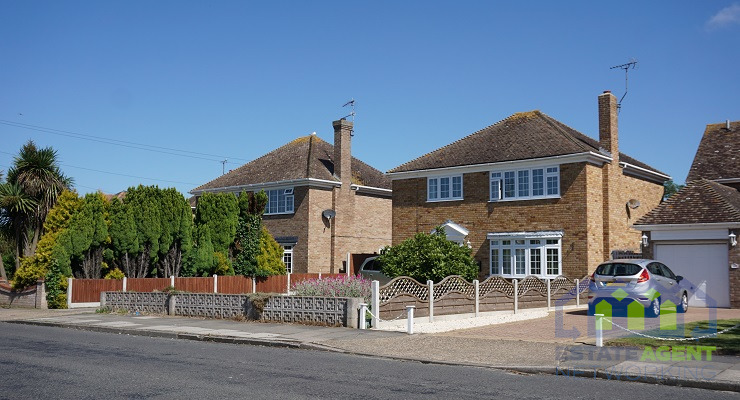Should you be worried about subsidence after the heatwave?
Domestic building insurance claims for subsidence rose sharply after the hot, dry summer of 2018. It was the hottest English summer on record and insurance claims were up by a staggering 400%. So, with climate change leading to hotter summers in the future in the UK, should we worry about our buildings?
The word ‘subsidence’ strikes fear into homeowners up and down the country. It occurs when the ground beneath a property sinks. The uneven ground movement can result in structural damage including cracks in walls, floors and ceilings, which can be costly to repair. It is true that hot, dry weather can put homes at greater risk from subsidence, but it’s not quite as simple as that.
How much of a danger is a heatwave?
Subsidence is caused by the drying out of the soil underneath the property’s foundations. While the hot weather may have made an ongoing problem worse, it is unlikely to be the only factor that caused it. One hot summer as part of the normal cycle of the seasons shouldn’t cause any harm.
As Justin Burns, a leading building surveyor in London explains: “It’s when the seasons go out of kilter that problems usually occur. For example, if we get several dry winters followed by hot summers clay soils shrink, but they do not expand again in the winter if there is not enough rain. If the soil dries out even further the next summer we might start to get noticeable movements and its usually after a period like this that we start to get a spate of subsidence claims.”
What causes subsidence?
Some types of soil are more prone to moisture changes than others. In the UK, houses built on clay soil that shrinks when there is less moisture in the ground, are at greatest risk. Clay soil is mainly found in London and the South East, the Midlands, the North East and North West. The soil, which feels smooth, sticky and dense to the touch, tends to shrink in the summer and autumn and recover by swelling in winter and spring when it’s wetter.
If you are not sure about the type of soil in your area, or whether your property is located in a high-risk area for subsidence, you can check on the British Geological Survey website and enter your postcode.
Roots from nearby trees and other vegetation are another key contributing factor. Roots take up water from the soil, drying it out and exacerbating any shrinkage. Willows, poplars, ash and oak trees are the worst offenders, having long fine root structures that allow them to soak up huge amounts of water every day.
For vegetation to cause subsidence, it has to be within your property’s ‘zone of influence’. As a rule of thumb, the span of the roots if at an equal distance to the height of a tree. If, say, you have a 10-metre oak tree in your garden located 5 metres from the house, you could have a problem.
Water leaking from damaged drains can also lead to soil being washed away from building foundations, though this is less likely to be a problem during a dry summer.
What are the signs of subsidence?
The most obvious signs of subsidence in the building is a crack in the wall, often next to a door or window, that is wider at the top than at the bottom. Windows and doors may be sticky or misaligned, floors may be uneven. Cracks may be seen on the inside and the outside of the house. Check out wrinkled wallpaper that may hide a crack underneath.
While every building is bound to have some minor cracking that are perfectly normal and have nothing to do with subsidence, ask yourself the following questions:
- Has the crack appeared suddenly? Is it just a plaster crack or does it go through the wall and onto the other side?
- Is the crack spreading fast and are the an area that is close to a tree or other vegetation?
- Does the crack display the telltale diagonal pattern?
If the answer to the above is mostly yes, your building may be affected. The most important thing you can do now is to contact your home insurer for advice. The vast majority of insurance companies will cover subsidence damage, though a £1000 excess for a claim is not unusual.
How to reduce the risk of subsidence
If you feel that your property might be at risk, managing the trees in your garden can go a long way towards mitigating potential problems. Research has shown that most subsidence problems involve trees to at least some degree, and that the combination of clay soils and thirsty trees can prove to be a fateful mix.
- Don’t plant unsuitable trees too close to your home, including your garage or outbuildings. Willows should be no closer than 40 metres from the property, poplars 35 metres and oak trees 30 metres.
- Trees can grow to substantial heights, so take responsibility for them and control their growth. If in doubt, ask a tree surgeon for professional advice. Pollarding or crown thinningwill control the amount of foliage produce, which will reduce the amount of water the tree consumes.
- Trees that are older than the property and too close for comfort should be removed carefully. Ask a tree surgeon for advice on how to remove the offending tree in stages, so as not to cause uplift of the ground and heave. Alternatively, you could have the tree takendown but leaving the roots in the ground.







